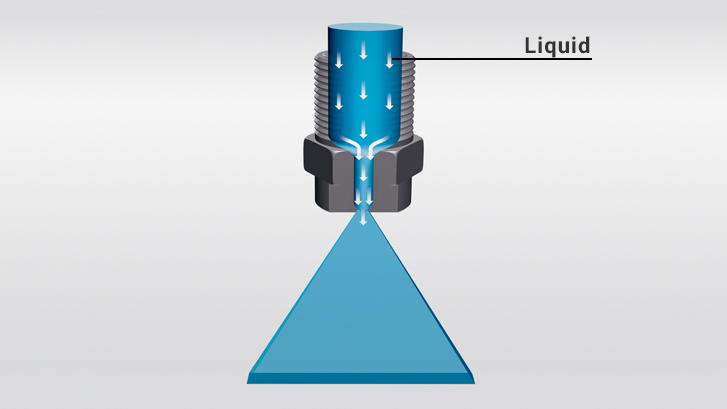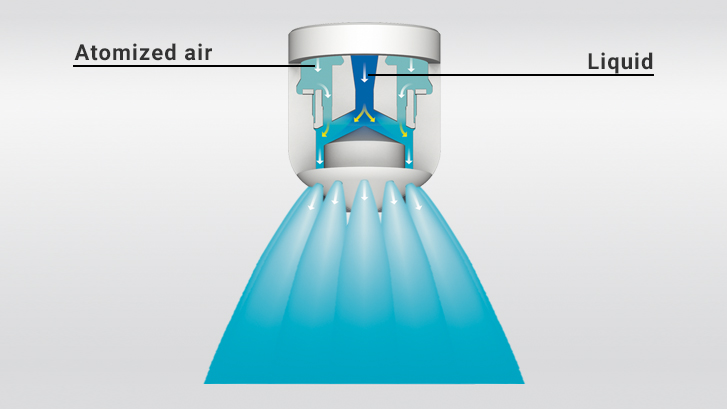Atomization methods
Atomization occurs when a liquid jet is broken down into more or less fine droplets. The ideal spray consists of drops of the same diameter.

Atomization methods can be divided into hydraulic atomization and pneumatic atomization. Depending on the construction of the nozzle or the design of the nozzle outlet, different spray patterns are produced.
Hydraulic and pneumatic atomization

Hydraulic atomization
A media passing through a nozzle increases in speed as the cross section diameter becomes smaller. Potential energy becomes kinetic energy (velocity).
After the medium passes through the nozzles orifice, it develops an aerodynamic wave pattern, which later leads to droplets in different sizes.
Pneumatic atomization
This atomization method achieves the highest degree of atomization: the finest droplets. Under certain conditions, the droplets can completely evaporate.
Pneumatic nozzles can be used, for example, to atomize more viscous media than water. A distinction is made between internal and external mixing pneumatic nozzles.
Atomization of viscous liquids
Viscosity is defined as the resistance of a liquid against deformation, and is based upon the friction between molecules within the liquid. The higher the friction, the more resistant the medium will be. For liquids, the resistance rises as temperature drops, therefore when taking viscosity measurements one must always specify the temperature of the liquid.
 Viscosity limits for the atomization of liquids
Viscosity limits for the atomization of liquidsWith atomization, this means that spray angle and droplet size can change noticeably depending on viscosity. When atomizing media with a viscosity higher than that of water, there are three ways to improve spray quality:
- By increasing the pressure, the volume flow rate can be increased in the atomization of incompressible media and thus can also improve spray quality.
- Raising the temperature lowers the viscosity of the medium. The spray quality is improved accordingly.
- By using twin-fluid nozzles, liquids with a viscosity of up to 1,000 mPa·s can be atomized (please refer to pneumatic atomization).
Further information
Spray character
Which (spray) character fits your application and which different spray patterns are available?
Spray CharacterNozzle functions
Explanations of the most important functional and operating data of a nozzle.
Nozzle functionsDroplet separators – Operating principle
Reduce residual pollutant contents and improve process engineering.
Droplet Separators – Functional Principle


